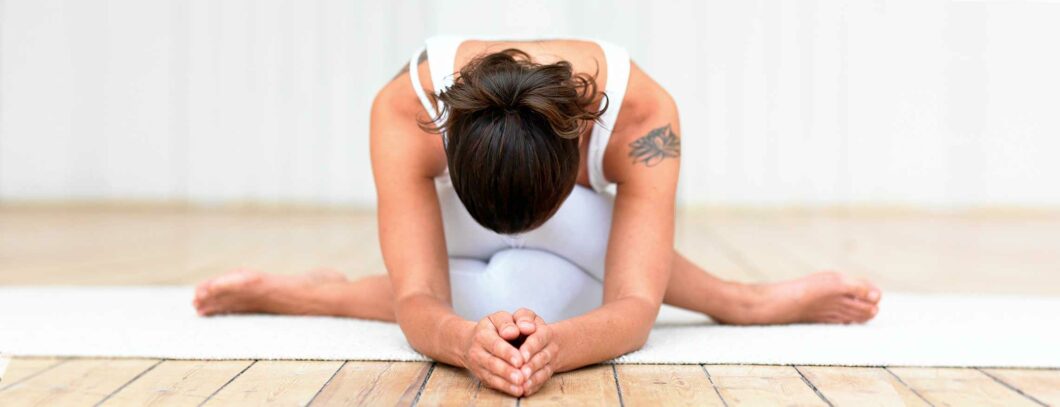is a question I received from an anxious person in Goa (and that I get now and then). It was obvious that some yoga teachers had claimed it, which was a bit clumsy and kind of reckless.
It made me sad, because this troubled person had gladly done Yin yoga with the help of my book and app for months, got helped by it both physically and mentally, but was now a bit scared and did not know if she should continue. She came up to me with a worried look, wondering.
And I reassured her: No, Yinyoga is not dangerous. No yoga is dangerous. No true yoga harms, all true yoga heals. It’s not what you do, what type of yoga you perform, but how you do it.
If you stretch aggressively out of line, on a hard surface for several minutes (without any props), it can clearly be “dangerous”. Regardless of the name of what you do. We can harm our bodys when we aren’t present, when we push ourselves or when an enthusiastic teacher wants to push us into a position.
Since Yinyoga is (or at least – should be) a slow, soft and relaxing yoga style that is practiced with mindfulness, it is actually one of the least “dangerous” of all yoga forms. A quick movement is more risky than a soft and slow movement. In yinyogan we rest softly in the postures and avoid ”stretching actively” instead we perform so-called passive stretch to our tissues. We also use many props for support; such as pillows, blocks and bolsters. We avoid pulling and fighting. We relax. We release.
Many of the so-called ”yoga injuries” occur in more dynamic forms of yoga and not in Yinyoga, and it is not because these yoga styles are more “dangerous”, but due to their quick, energetic and sometimes forced energy. Or that you as a student is forced into positions that your body is not ready for.
Of course, it’s also about who is doing the yoga. Hyper-flexible, double jointed bodies (eg, a dancers, bendy yoga teachers or ballerinas) should be much more careful in any yoga-style and especially in the long-held position in yinyoga. Their joints are probably more vulnerable and should have a lot more support.
With that said, I actually have such a student; a former ballerina with osteoarthritis in both her knees (about 60 years old) who loves Yin yoga and practice it often, but with plenty of props (pillows, blocks, etc.) and mindful and conscious alignment. And her body is feeling great.
In fact Yin yoga is such a useful and healing yoga form for both the body and mind that it will be part of a scientific study by a group of researchers at Karolinska Institutet, one of the most renowned hospitals in Sweden. I will announce when this happens, and when it is finished (it takes about three years). The effects of a Yin practice will be scientifically verified. Im very excited about it!
Yin yoga had already been included in the psychologist and researcher Fredrik Livheims study at the Karolinska University pain clinic (see his website www.livskompass.se). That would not had been possible if it was “dangerous” (Fredrik and I even made a CD together called “When it hurts”).
Many physiotherapists, doctors, osteopaths, chiropractors and alike recommend Yin yoga to their patients (and many are joining my Intensives and workshops). They wouldn’t if there would be a risk of injury with Yin yoga.
Nor would the countless people who have been helped by this form of yoga continue to rest in the soft positions and tell how it has healed them, how they have become pain free and more relaxed. Both in email-form (Thank you!), in person and in the many reviews online.
To all of you who ever hear that any form of yoga is dangerous: listen to your body. Listen to what it says. And do any type of yoga that makes you more relaxed, happier and more pain free. Whether its called Yin yoga, Vinyasa, Bikram or Ashtanga.
True yoga never hurts, true yoga always heals!
With lots of (harmless) love,
Magdalena
PS. Of course all teachers teach a little differently. “My” Yin yoga style is a very soft and gentle style with much mindfulness and relaxation. During this interview with anatomy teacher Stu Girling I explain my view on Yin yoga and how I teach it. https://www.youtube.com/watch?v=QC0ZEnwki6A
